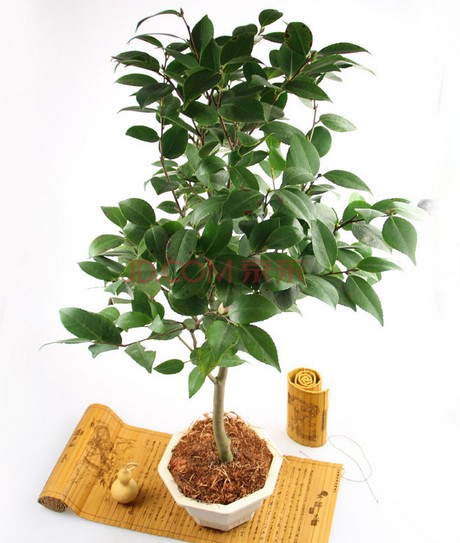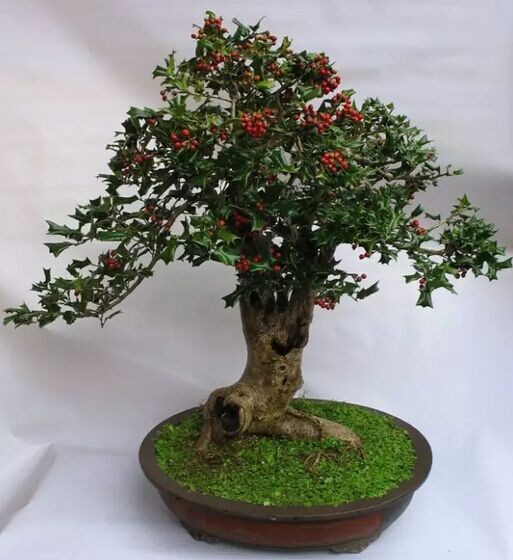Seed treatment of potted Camellia during sowing
Under the condition of pot culture, especially in the non-origin of camellia, camellia generally bear little fruit, only under the conditions of low degree of single petal or stamen petal, normal pistil development, artificial pollination and suitable temperature and humidity. to get seeds with the ability to germinate.

When the capsule is reddish and cracked, the fruit can be harvested and the seeds can be removed in time. In order to test the possibility of seed germination, it can be placed in an empty vessel filled with clear water. If the seed floats on the water, it shows that the seed is empty and does not germinate after sowing; if the seed sinks in the water, it means that the seed has a full seed embryo and can germinate. Because of the high water content of Camellia seed, if it is dried and stored directly after removal, it will lose its germination power rapidly due to the loss of water. The more feasible method is:
After the seeds are lifted out of the clear water and stored in fine sand with moderate dry and wet conditions, the water content of the sand mud should be clustered and loosened, and when the radicles of the seeds are exposed in February-March of the next spring, they can be sown in loose and fertile potted soil or seedling beds. If in the south of the Yangtze River, it can also be sowed on the open field seedbed with picking, covering soft grass or pine needle to keep warm and moisturizing in winter, which can also play a role in promoting germination, and the germination rate is higher than that of spring sowing.
Camellia seed seedlings grow slowly in the first 1-2 years, but accelerate after 3-4 years, and usually take 4-8 years or more to bloom. Therefore, in productive cultivation, the seedlings are generally bred only by cutting or grafting, but the seedlings must be raised by sowing in camellia cross breeding.
In October, early and mid-October, put the harvested fruit in an indoor ventilated place to dry, wait for the capsule to crack and take out the seed, sow immediately. If you cannot sow seeds immediately in autumn, you need to hide them in sand and sow them in February of the following year. Generally, the germination rate of autumn sowing is higher than that of spring sowing, which is suitable for single or semidouble varieties. The seeds are ready for sowing when they mature in the middle of October. Shallow sowing is better, vermiculite as substrate, covering 6 mm, room temperature 21 ℃, light for 10 hours per night, can promote seed germination, germination begins 15 days after sowing, seedling height reaches 8 cm within 30 days, seedlings are transplanted when they have 2 or 3 leaves.
Time: 2019-06-13 Click:
- Prev

Misunderstandings to be avoided in fertilizing Camellia Bonsai
Many people like to grow flowers at home, which not only beautifies the room, evolves the air, adjusts the temperature and reduces the heat, but also edifies the sentiment and pleases the body and mind. however, in order to make the potted flowers flourish and bloom, in addition to watering, fertilization is also an important link in the process of flower cultivation, when the flowers are in the growing period.
- Next

Pruning and pose technique of medlar bonsai
Dog bone is Chinese wolfbone, scientific name: Ilexcornuta, also known as cat thorn, tiger thorn, star anise thorn, bird not overnight, dog bone thorn, cat incense, mouse tree, etc., is an evergreen shrub or small tree, the leaf shape is strange, green and bright, evergreen all the year round, the red fruit is full of branches after autumn, does not wither through winter, gorgeous and lovely
Related
- Fuxing push coffee new agricultural production and marketing class: lack of small-scale processing plants
- Jujube rice field leisure farm deep ploughing Yilan for five years to create a space for organic food and play
- Nongyu Farm-A trial of organic papaya for brave women with advanced technology
- Four points for attention in the prevention and control of diseases and insect pests of edible fungi
- How to add nutrient solution to Edible Fungi
- Is there any good way to control edible fungus mites?
- Open Inoculation Technology of Edible Fungi
- Is there any clever way to use fertilizer for edible fungus in winter?
- What agents are used to kill the pathogens of edible fungi in the mushroom shed?
- Rapid drying of Edible Fungi

